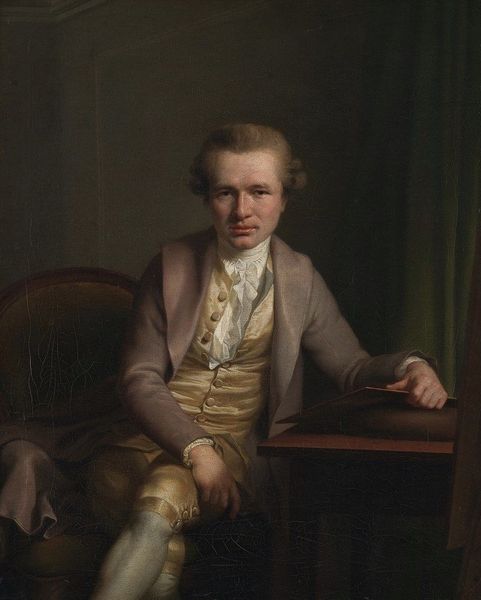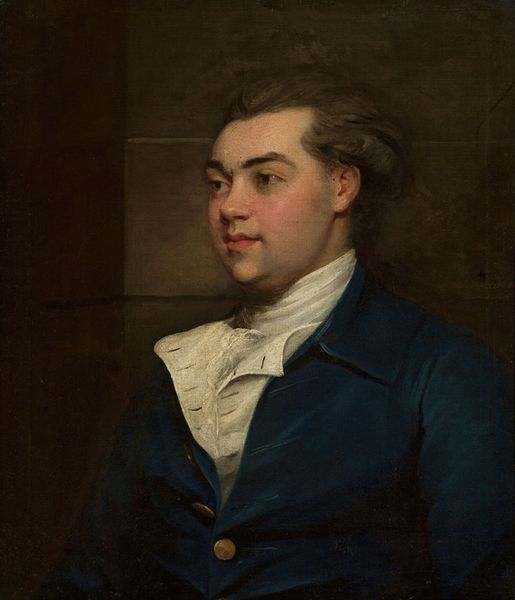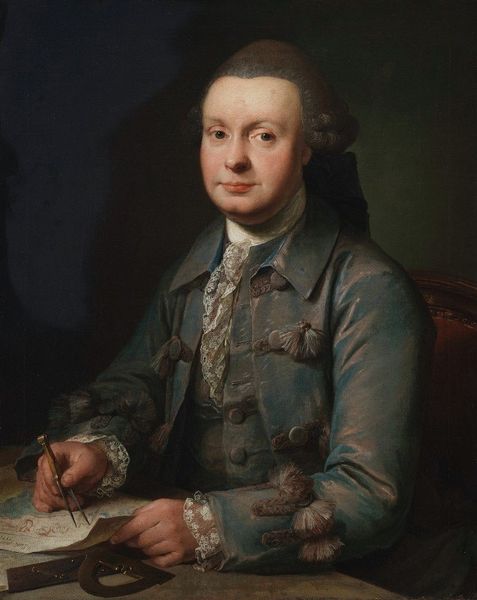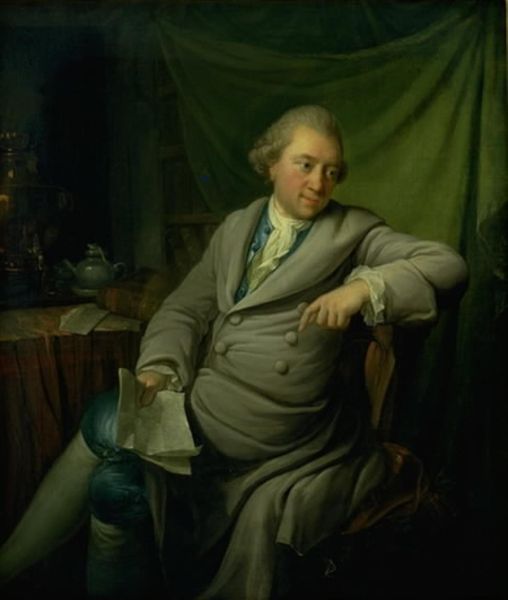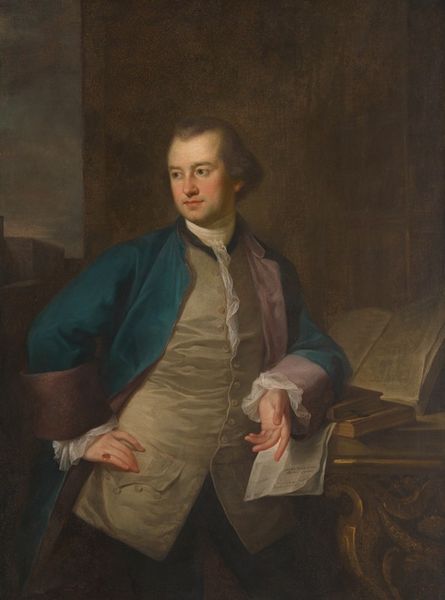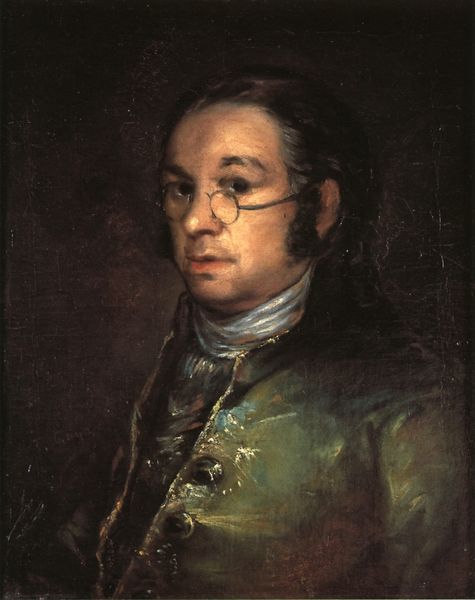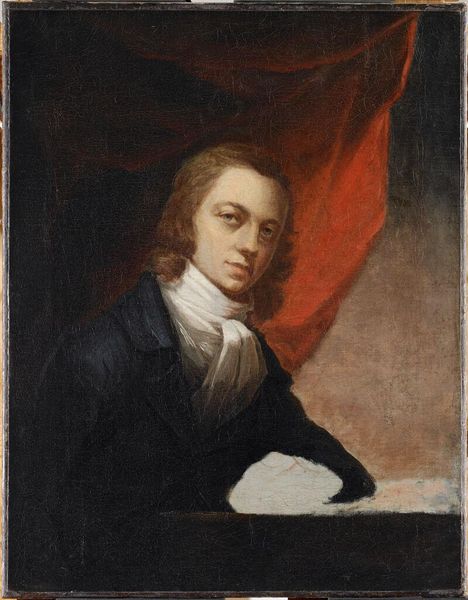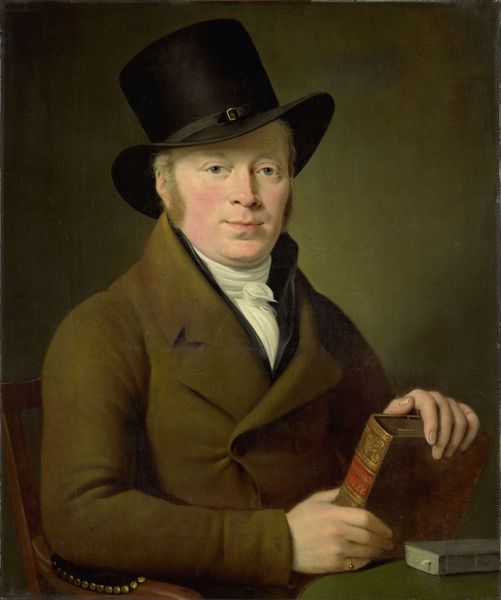
painting, oil-paint
#
portrait
#
neoclacissism
#
portrait
#
painting
#
oil-paint
#
genre-painting
Dimensions: 100.96 x 126.36 cm
Copyright: Public domain
Editor: So, this is John Singleton Copley's "Lemuel Cox" from 1770, painted in oil. I find his confident, yet relaxed, pose quite compelling. What can you tell me about the history surrounding this piece? Curator: Copley was the preeminent portrait painter in colonial America, straddling the shift from the baroque to the neoclassical. It's crucial to understand that this portrait of Cox reflects not just an individual but a burgeoning merchant class flexing its social muscles just prior to the Revolution. How do you see this reflected visually? Editor: I suppose the naval-style jacket alludes to trade and worldly affairs. He looks self-assured and like he’s posing for the portrait. I hadn’t placed him at that historical juncture, though. Curator: Precisely. These commissions weren't solely about aesthetics. They were powerful statements about status and aspiration. Think about who had access to portraits and who commissioned them; such visual records held power. The setting, too, while seemingly simple, is important. Notice the stark dark background and dramatic, but minimal, lighting; Copley uses these techniques to elevate Cox above the common. Editor: Interesting! So the dark background makes a point about the sitter being in control? Curator: You could certainly say that, but beyond control it’s about creating a striking image. The almost harsh lighting places the sitter above society’s constraints by making him the immediate focus. Copley painted the wealthy merchant class for decades so consider that these techniques evolved over time with their importance. What about this piece resonated with you, then, upon initial viewing? Editor: I really liked the colour palette, particularly the deep blues contrasted with the white frills and the highlights on the buttons, which shows the opulence that he has. The historical perspective has now given me a new point to understand the political context in addition to enjoying the color. Curator: Exactly! Art always exists in relation to its time, shaped by the individuals, institutions, and historical forces at play.
Comments
No comments
Be the first to comment and join the conversation on the ultimate creative platform.



